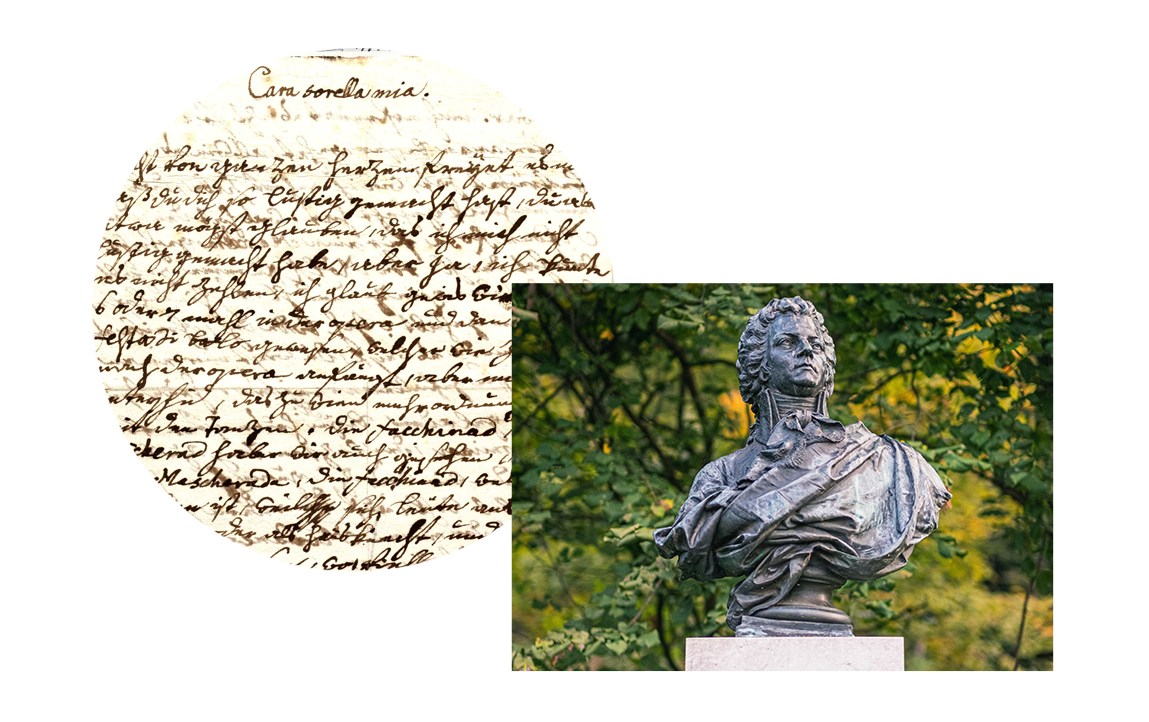Mozart's Extraordinary Summer
Saturday, March 9 at 7:30pm
Sunday, March 10 at 3:00pm

Mozart's Extraordinary Summer
Saturday, March 9 at 7:30pm
Sunday, March 10 at 3:00pm

Mozart's Extraordinary Summer
Saturday, March 9 at 7:30pm
Sunday, March 10 at 3:00pm

The Palace Series
Experience the thrill of a live, full orchestra
Location
The Palace Theatre
61 Atlantic Street, Stamford, CT 06901
Duration
2 hours with a 20
minute intermission
Share With
About this performance
Even for Wolfgang Amadeus Mozart, famously prolific as he was, the summer of 1788 was the backdrop for an extraordinary burst of creativity and imagination which produced so much masterful music it not only defies explanation, but is too extensive to represent in only one program. In this concert, we will play some of the music which then set the stage for the mighty Symphony No. 41, his last, that would come just a few weeks later — and which we will present in our next season, as we present in two parts “The Birth of Jupiter”. This first installment brings the two symphonies Nos. 39 and 40, which preceded the “Jupiter” symphonies by just a few weeks, together with another great work from that busy summer, the Adagio and Fugue for Strings.
Michael Stern, conductor
Musical Program to include
Mozart Adagio and Fugue for Strings
Mozart Symphony No. 39
Mozart Symphony No. 40
Your Orchestra Lumos Experience
Join Us for Illuminating discussions hosted before and after concerts
Behind the Baton: Held in the theater one hour prior to each concert
Learn more about the program with Music Director Michael Stern. This pre-concert talk offers a deeper
look into the music and introduces you to the soloist.
After Hours: Held in the lower lobby café following Saturday evening concerts
Michael Stern moderates an interactive discussion after the concert with a panel of guests (musicians, composers, and community leaders). Join us for a glass of wine and feel free to ask questions and share your own thoughts!
Sharing the Joy of Music with Young Audiences
Orchestra Lumos is dedicated to broadening access to, and appreciation of, musical experiences for young
audiences. Kids ages 5 to 17 come FREE* with accompanying adult for Sunday afternoon concerts. (* $4 facility fee is applied to all tickets ordered).
Symphony No. 40 in G minor, K. 550
Wolfgang Amadeus Mozart
1756-1791
When listening to any popular and well-known piece of music, it is difficult to keep from being lulled into inattention by its sheer familiarity. And while we can never hear a 200- year-old work from the point of view of its original audience, it is useful to pretend, at least, to be hearing it for the first time.
Despite the fact that most modern listeners tend to regard the key of a work as irrelevant, musicians of the Baroque and Classical periods regarded certain keys as possessing specific emotive qualities, or “affects.” Minor keys in particular were fraught with emotional significance, and few symphonies in this period were written in minor keys. For Mozart, the key of g minor was the key of extreme pathos. He used it sparingly for some of his most heart-wrenching music: the String Quintet K. 516; the Piano Quartet K.478; Pamina’s aria “Ah, ich fuhl’s” from The Magic Flute; and, of course, the stormy so-called “Little g minor” Symphony No. 25, K. 183 written when he was only 17.
Mozart’s final three symphonies, nos. 39, 40 and 41, were written over a two-month period in 1788, probably as part of a portfolio of new works destined for a series of summer concerts in Vienna. Unfortunately, we lack any information on whether the concerts actually took place, much less about their reception. At this point his career was already in decline despite the success of his two great operas Don Giovanni and The Marriage of Figaro written in collaboration with his brilliant librettist Lorenzo da Ponte. That is not to say that Mozart’s music was somehow denigrated or considered no longer pleasing; his published scores were selling briskly and his music wascbeing performed all over Europe. It was almost as if there was a surfeit of Mozart – that he was too well known. And although he was in desperate need of funds to support his lifestyle, his legendary productivity faltered as well.
The three symphonies reflect different moods, the darkest being that of No. 40. It is almost as if the tragedy of this symphony saw its resolution only in the triumph of No.41 (nicknamed “The Jupiter,” but not by Mozart). Ironically, we know less about the circumstances surrounding this most famous of Mozart’s over 600 creations, nor can we extrapolate any specific, solid evidence of how it might have reflected the circumstances of his life or his emotions.
The opening theme of Symphony No. 40, with its hushed, nervous introductory upbeat in the violas, sets the tone of urgency and anxiety that pervades the entire work. The second movement Andante is the only movement in a major key. But while it begins serenely enough, it, too, turns dark and intense in the course of its development.
Even the Minuet, usually the most lightweight movement in a Classical symphony, retains the original key and is characterized by a series of phrases ending on successively higher and higher notes, ratcheting up the emotional tension. Restatements of the theme in imitative counterpoint pile on top of each other in their agitation. The Trio, at least, provides an emotional break, however slight.
The theme of the finale is a musical portrayal of hysteria, a shrill arpeggio ending in a sighing appoggiatura, followed by a pounding motive in the orchestra that closes with an echo of the sigh in the lower register. Despite a lyrical second theme, the movement is in constant nervous motion. Finally, Mozart subverts the custom of ending symphonies in minor keys in the major, and stays in g minor to the end. Even Tchaikovsky concluded his morose Fifth Symphony in triumph.
Program notes by:
Joseph & Elizabeth Kahn
Wordpros@mindspring.com
www.wordprosmusic.com
*artists and programs subject to change







